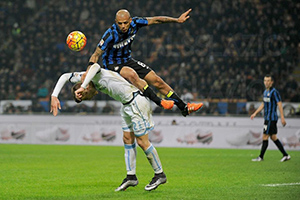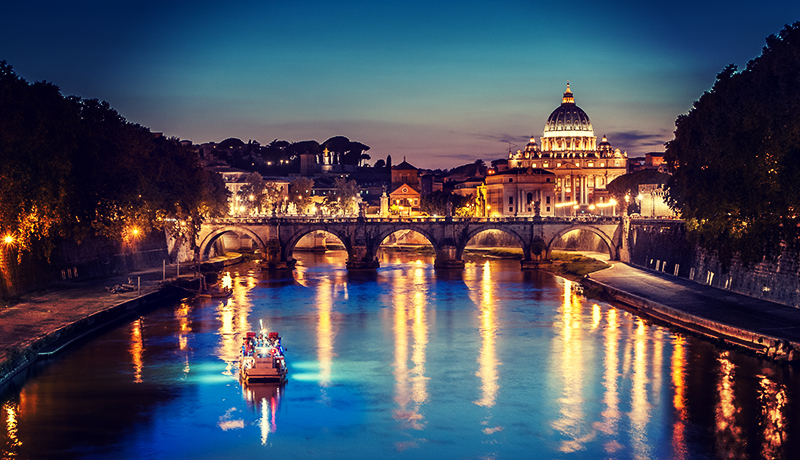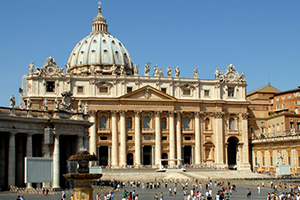
Winter in Rome is beautiful. It’s just cold enough to enjoy the necessary dose of chill, but never too frigid for a walk or even a seat outside with a toasty cappuccino. Admittedly, come January, life slows down in the Eternal City, but this year, Rome will continue celebrating post-New Year’s with the Extraordinary Jubilee, the Holy Year of Mercy that began on December 8 when Pope Francis pushed open the Holy Door of St. Peter’s Basilica.
Under way through November 20, 2016, the nearly year-long religious event includes papal audiences, festivities and religious celebrations. On January 1, 2016, Pope Francis opens the final Holy Door (which symbolizes the gateway to salvation) at the Basilica of Santa Maria Maggiore, the last of the four major papal basilicas for this celebration. For those looking to hear the pope speak, the pontiff will have public audiences at St. Peter’s Square (including January 30 and February 20) through the Holy Year. For the Holy Year’s detailed calendar, visit the Vatican’s always-updated website.
January 6 is the country-wide Feast of the Epiphany, known in Italy as the Befana, a sugary-sweet day that also recognizes the last day of Christmas. In Rome, this also means the last day of its Piazza Navona Christmas market. Though smaller in size than in past years, the traditional holiday market is a gathering place for families with young children that’s filled with game vendors and a vintage carousel as the centerpiece of the piazza.
Throughout January and February, Rome is brimming with other great indoor and outdoor activities that will keep you warm for the winter. You’ll want to reserve a box at Teatro dell’Opera because its historic Teatro Costanzi will host two epic Rossini operas — La Cenerentola (director Emma Dante) from January 22 to February 19 and The Barber of Seville (director Davide Livermore) between February 11 and 21.
The city also offers a winter of blockbuster exhibitions, including a retrospective of Franco-Polish painter Balthus at the Scuderie al Quirinale (through January 31), 170 prints and illustrations by French artist Toulouse-Lautrec at the Ara Pacis (through May 8) and an incredible showing of European painters from the mid-20th century avant-garde CoBrA movement at Fondazione Roma Museo (through April 3). Perhaps closer to the essence of Rome is “Urban Talks,” a smaller exhibit of photographs by Mimmo Frassineti at the Museo Carlo Bilotti (through January 17) that capture the city’s street art.

Futbol Fever, Photo Courtesy of SS Lazio
The holidays nor the weather will stop Rome’s soccer teams, AS Roma and SS Lazio, from battling each other and the rest of Serie A for the scudetto (the award given to the champions of Italy’s top division) and neither should it hinder you from having a truly Roman experience on the pitch. Bring your warmest sweater, gloves and hat, and get ready for an afternoon at the Stadio Olimpico. Tribuna seats are the best and definitely the calmest, especially if you are wearing the right colors — sky blue for Lazio and orange and red for Roma. Matches not to miss include Roma versus Milan (January 10) and Lazio against Napoli (February 3).
By the end of January, Rome gets ready for carnevale, two weeks that lead up to Ash Wednesday (February 10). Though not quite as rowdy as New Orleans’ Mardi Gras or as ribald as Venice’s carnival, expect celebratory performances and light shows at Rome’s Piazza del Popolo and Piazza Navona, usually announced by mid-January.


